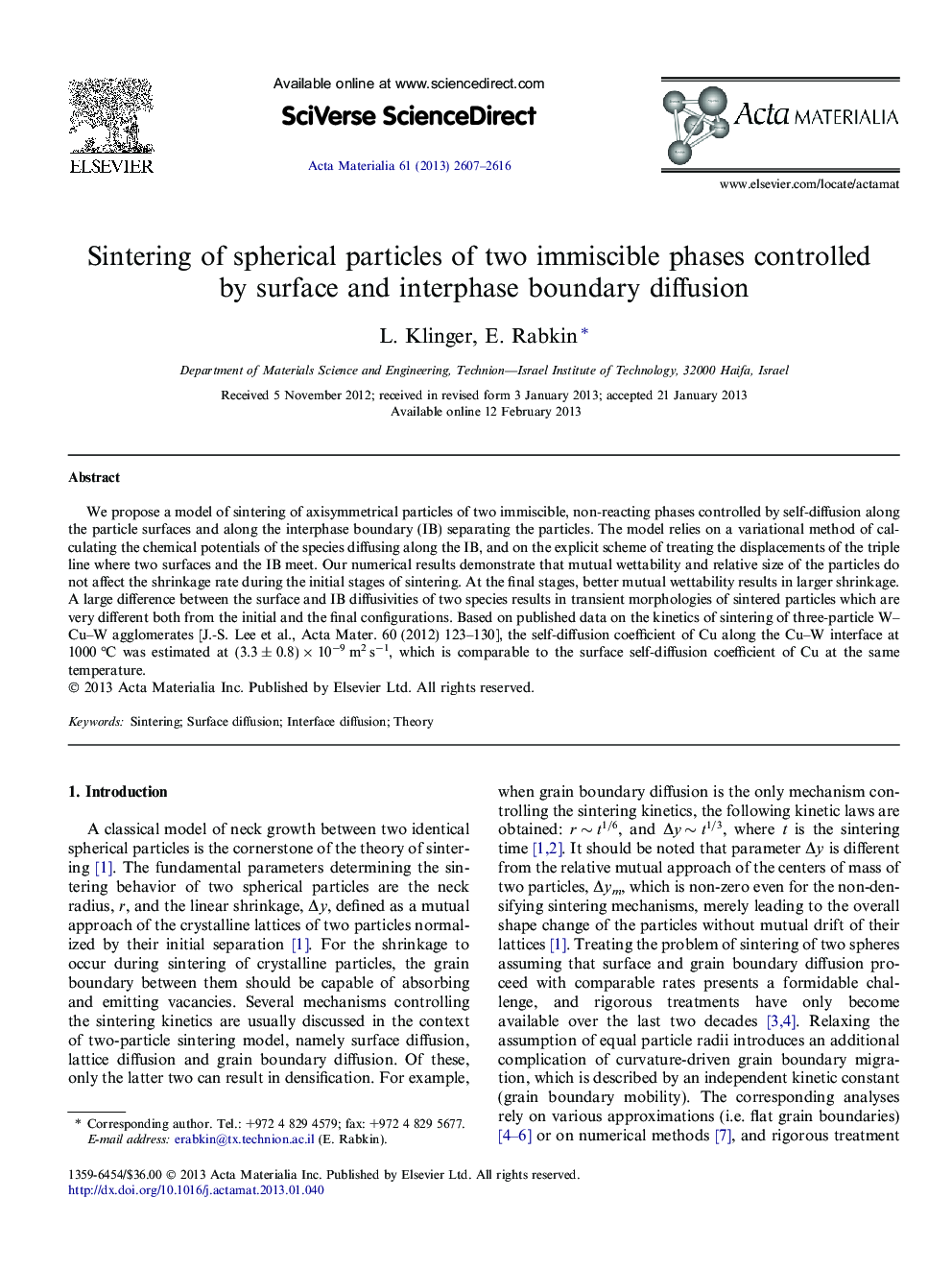| Article ID | Journal | Published Year | Pages | File Type |
|---|---|---|---|---|
| 10620206 | Acta Materialia | 2013 | 10 Pages |
Abstract
We propose a model of sintering of axisymmetrical particles of two immiscible, non-reacting phases controlled by self-diffusion along the particle surfaces and along the interphase boundary (IB) separating the particles. The model relies on a variational method of calculating the chemical potentials of the species diffusing along the IB, and on the explicit scheme of treating the displacements of the triple line where two surfaces and the IB meet. Our numerical results demonstrate that mutual wettability and relative size of the particles do not affect the shrinkage rate during the initial stages of sintering. At the final stages, better mutual wettability results in larger shrinkage. A large difference between the surface and IB diffusivities of two species results in transient morphologies of sintered particles which are very different both from the initial and the final configurations. Based on published data on the kinetics of sintering of three-particle W-Cu-W agglomerates [J.-S. Lee et al., Acta Mater. 60 (2012) 123-130], the self-diffusion coefficient of Cu along the Cu-W interface at 1000 °C was estimated at (3.3 ± 0.8) Ã 10â9 m2 sâ1, which is comparable to the surface self-diffusion coefficient of Cu at the same temperature.
Related Topics
Physical Sciences and Engineering
Materials Science
Ceramics and Composites
Authors
L. Klinger, E. Rabkin,
